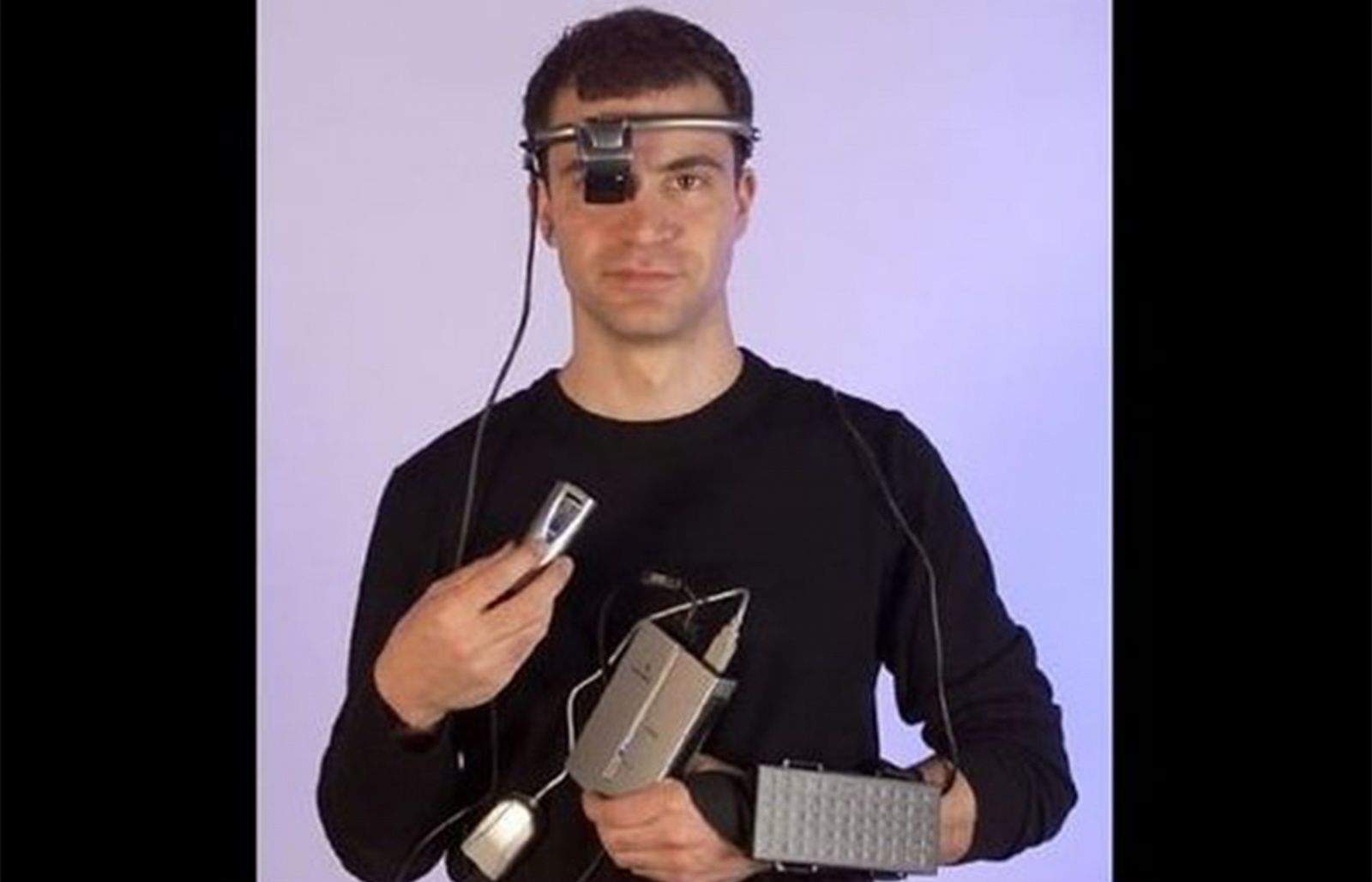It would have been hard to don a Xybernaut Poma wearable PC in 2002 without uttering the phrase, “Resistance is futile.”
 What was arguably the first wearable computer had the look of a Borg, a cybernetic villain from Star Trek: The Next Generation.
What was arguably the first wearable computer had the look of a Borg, a cybernetic villain from Star Trek: The Next Generation.
The Borg’s design, a menacing mashup of species and technology, was badass, but Poma users just looked awkward. The computer’s processing unit was portable enough, fitting in a pocket or clipping to a belt. But once you added the keyboard to the forearm and a clunky-looking, head-mounted optical piece, your cool crashed like a bad hard drive.
Poma’s introduction captivated tech types. Certain professions, like law enforcement and NASA workers, saw a need for real-time recording and processing of information. The Poma, which stands for personal media appliance, failed because of its steep price, poor battery life and bulky fit. The company eventually got sidetracked by indictments for securities fraud after some investors cried foul.
But with a new dawn for wearable technology, some look back on Xybernaut’s first wearable models and give the company a little credit for starting the conversation with a device that might have been ahead of its time.
Google Glass seemed to be an improvement. Gone were the belt attachment and forearm keyboard. Ten years of tech advances produced a sleek, eyeglass-type frame with a tiny screen. But Glass hasn’t made it to the masses. A small number were made available to a pool of test users and, once again, bugs and battery life were among the many turnoffs.
“What happens is you find just how difficult it is to integrate this technology with our story,” said Romie Littrell, a curator with The Tech Museum of Innovation in San Jose, California. “Xybernaut and Glass are the necessary failures. No one has figured out a killer use for the technology.”
Littrell, who recently developed a permanent Body Metrics exhibit at the museum, said wearable computing has to produce meaningful information that fits our narrative. The farthest-reaching inroads have been in fitness, with sensors that measure heart rate, steps and calorie burn, he said.
The National Hockey League currently is negotiating with the players’ union for players to wear sensors in their jerseys to track information like skating speed as a way to further engage fans and perhaps create new kinds of statistics to measure.
Law enforcement is constantly exploring new technology as a way to gain fresh advantages in crime-fighting and prevention. U.S. Border Patrol agents quickly embraced the Xybernaut Mobile Assistant IV, finding it especially valuable for accessing databases to verify on the spot whether vehicles are stolen.
Lately, wearable tech in law enforcement has been discussed as a necessary measure of accountability for officers. Over the past year, high-profile incidents where an officer’s use of force left unarmed men dead fueled discussions about mandatory body cameras. There is mounting pressure for police officers to wear body cameras to record their interactions with the public, though questions remain over who would monitor the raw footage from these devices.
For now, fitness trackers, smartwatches and clip-on body cameras seem to be about all the computing power we’re willing to wear.
Technology leaders tend to ride the waves because developing a product for down the road requires financial risk with room for setbacks and failures few can afford, Littrell said.
Littrell is not so sure the Poma was a vision that made today’s wearable computing possible.
“It’s a good story but if you look at it, they didn’t put a lot of effort into it,” he said. “It looks like somebody took different (computer) components and attached them to the body.”
https://youtu.be/YRIRjBMB_YA



3 responses to “First wearable computers made you look like a freaking Borg”
Wow, that craptastic headset looks just like that turd Google Glass
google Steve Mann and you will know who the original human cyborg is.
The first image looks more like today’s Google Glass while the video has what appears to be the embarrassing contraption from The Daily Show showing stupid people look wearing the equivalent of a smartphone strapped to their heads.
And like Google Glass this device doesn’t answer the question of why we’d need such a device and just strapped the tech on because they could.
I’m trying to imagine going to lunch and seeing some schmuck all that crap on, stops eating his chicken Alfredo to, what, fill out a spreadsheet before his meeting in 20 minutes using his forearm keyboard and talking into a producer’s-headphone-mic?!!